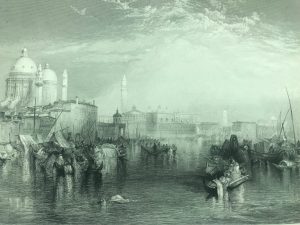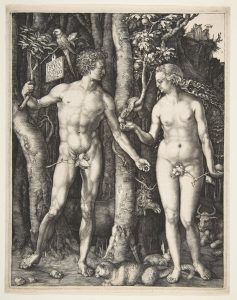Line engraving is an art form that was very popular in the 18th and 19th centuries, where you could find line engravings done for illustrations in books, magazines, and paintings. The technique for creating line engraving art starts by carving a design into hard materials such as copper, steel or plastic and then ink is rubbed into the carved areas. Once the ink has been applied to the engraved areas, it is put into a press with paper to transfer the lines to reveal the finished design.
that was very popular in the 18th and 19th centuries, where you could find line engravings done for illustrations in books, magazines, and paintings. The technique for creating line engraving art starts by carving a design into hard materials such as copper, steel or plastic and then ink is rubbed into the carved areas. Once the ink has been applied to the engraved areas, it is put into a press with paper to transfer the lines to reveal the finished design.
Engraving originated independently in the Rhine valley in Germany and in Northern Italy in the middle of the 15th Century. The first known engraver was Martin Schongauer who was a goldsmith and also a painter, the art was believed to have been created by German goldsmiths who started the trend of creating engravings of their initials into their canvas. In Italy, the engraving art form grew out of both goldsmith’s art and niello work, which is the art of decorating metal with incised designs filled with a black mixture made of Sulphur, copper, silver, and lead. Throughout the mid-1400s the art form of engraving quickly grew, and artists were soon able to develop engraved reproductions of famous paintings.

A notable famous artist that used the technique of line engravings was German-born Albrecht Durer, most famously known for his work as a painter and printmaker from the late 1400s to mid-1500s. One of his most famous engraved works is the copper engraving of Adam and Eve in 1504, a genuinely remarkable representation of the talented engraving work done in this period.
Here at McFarlin Library Special collections, we have the Josephine Walker collection of J.M.W Turner line engravings that features a significant amount artwork created from line engravings. There are a variety of different mediums that have been used in the artwork and one in particular that caught my eye Is the line engraving called Venice (top of the page). This artwork contains a depiction of the Giudecca canal in Venice, Italy, in the picture there is a large number of gondolas and merchant boats in front of the cityscape. This artwork stands out because of the incredible detail from the line work and the skill to create realistic scenery through engraving.
If you would like to see the Josephine Walker collection of J.M.W Turner, come and visit us at McFarlin Library Special Collections on the 5th floor. We are open Monday – Friday from 8am – 4.30pm, we hope to see you soon.
